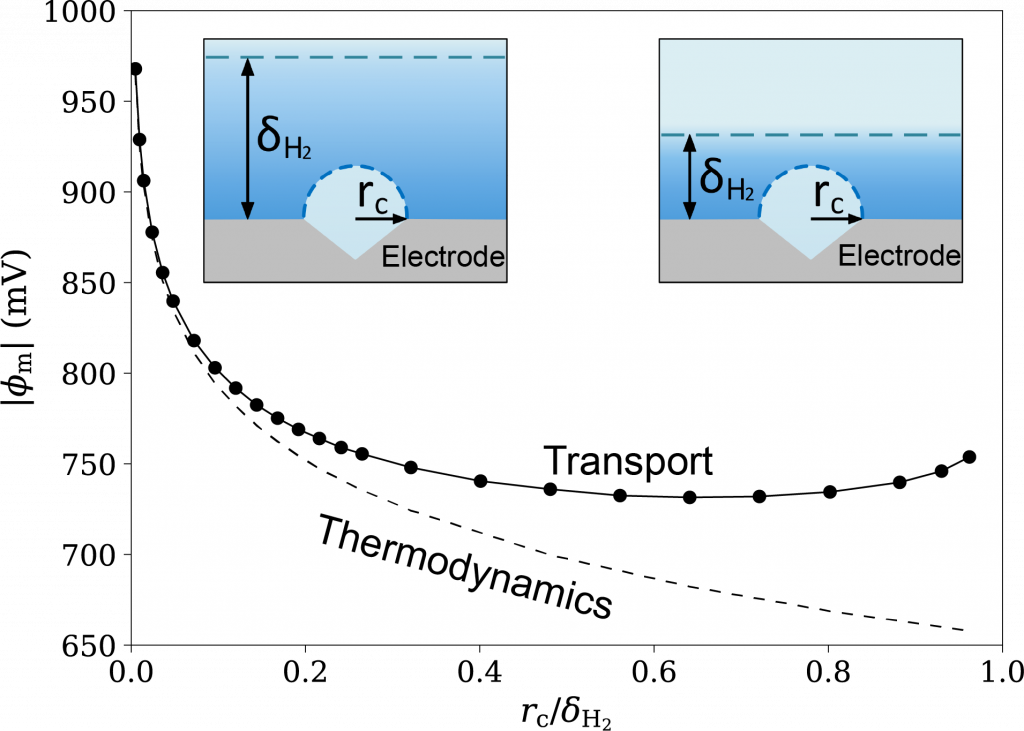
Bubble nucleation is ubiquitous in gas evolving reactions which are instrumental for a variety of electrochemical systems. Fundamental understanding of the nucleation process, which is critical to system optimization, remains limited as prior works generally focused on the thermodynamics and have not considered the coupling between surface geometries and different forms of transport in the electrolytes. Here, we establish a comprehensive transport-based model framework to identify the underlying mechanism for bubble nucleation on gas evolving electrodes. We identify the significance of the gas diffuse layer thickness, a parameter controlled by external flow fields and overall electrode geometries, which has been largely overlooked in previous models. Our model framework offers guidelines for practical electrochemical systems whereby without changing the surface chemistry, nucleation on electrodes can be tuned by engineering the cavity size and the gas diffuse layer thickness.
Related article: Langmuir 2020